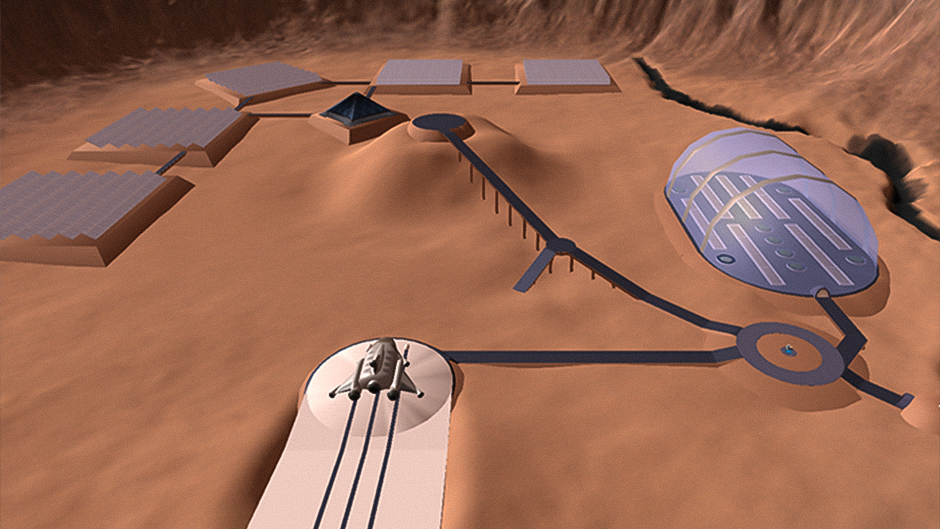Have you ever wondered what it might be like to live on Mars? Well, University of Miami students could spend their spring semester learning from a transparent dome housed on the red planet, and venturing to other planets also, through a video game that aims to introduce them to the field of astronomy.
It is all part of a new, interactive version of the course “Descriptive Astronomy,” offered through the Department of Physics in the College of Arts and Sciences. The class, which physics assistant professor Nico Cappelluti has been teaching to about 70 students each spring for a few years, will now use a game called the University of Mars to take students on a journey through the solar system. Students will get a chance to learn about the stars, moons, and planets by navigating around them.
“The game takes place on a human colony on Mars and each student becomes the main character of this game,” he said. “By interacting with other people on Mars and utilizing technology there, they are able to start learning about astronomy.”
Each class also has an interactive lab, so students get a chance to engage with concepts like gravity and parabolic motion, and even get to see an eclipse from Mars, said Massimiliano Galeazzi, professor and chair of the Department of Physics, who is eager to see students take advantage of the immersive experience.

“In one level about gravity, as you change the planets you are jumping on, you see that you can jump higher on certain ones,” Cappelluti said. “This is something you cannot show students on Earth, but you can do it with this game.”
Cappelluti said he came across the game at an American Astronomic Society conference last January, and learned it was developed by an astronomy professor at The Pennsylvania State University. After talking with the professor, Cappelluti was struck by how well organized it was—the game covers most of the topics he does in class, like constellations, moon phases, gravity, physical laws of the solar system, and even includes quizzes and exams at the end of each level.

“Our lessons will be pure active learning, where students will play during class and as the teacher, I will facilitate, with discussions on the content. I’ll also be there to support students and help them overcome any challenges with the topics,” Cappelluti said.
Cappelluti and Galeazzi, both astrophysicists, are excited to see what students think of the pilot course. They hope it will attract more students to the sciences, since the course is designed for non-science majors.
“For students who don’t want to take science classes, we want to show them that science is fun and can be done in an environment where you don’t have to feel overwhelmed by it,” Cappelluti said. “Astronomy is one of the most interesting sciences you can learn, and I think having the opportunity to learn it through a video game is unique.”
Galeazzi hopes the new delivery method will help students get more engaged in the course, so that they will retain the material better.
“Hopefully, with this game, students will appreciate what they are doing, have fun, and maybe it will open the door to more courses like this one,” he said. “As a department, we have been pioneering new active learning styles and this is a different way of teaching that may work better.”
At Penn State, astronomy and astrophysics professor Jane Charlton developed University of Mars with a small team and began using it with her students in 2015. It has gained popularity since then and is part of an art and astronomy course now taken by more than 70 percent of Penn State undergraduates, she said. The program is also used by 10 other institutions, including University of Central Florida, University of Northern Texas, and Drexel University, she added.
The course will be held in the McKnight Physics building and students only need a laptop to attend, Cappelluti said. To enroll, visit CaneLink and search for Physics 110.

